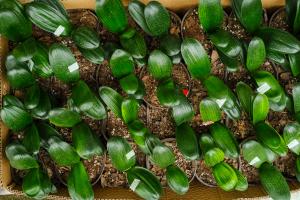How to Lower pH in Plant Water
When it comes to maintaining a healthy environment for plants, pH balance is crucial. The pH level of water affects the absorption of nutrients and can ultimately determine the health and growth of plants. Generally, a pH level between 5.5 and 6.5 is considered ideal for most plants. If the pH of your plant water happens to be too high, don't worry. We have compiled a list of effective methods to lower the pH in plant water.
Method 1: Vinegar
One of the most easily accessible household items that can effectively lower the pH of plant water is vinegar. You can use white vinegar, apple cider vinegar, or any other type of vinegar, as long as it doesn't have any added sugar. Simply add a few drops of vinegar to your plant water and check the pH level. Be sure to use only a small amount of vinegar at a time and monitor the pH level closely, as too much vinegar can be harmful to your plants.
Method 2: Citric Acid
Another popular and effective method to lower the pH of plant water is by using citric acid. Simply add a quarter teaspoon of citric acid to a gallon of water, mix well, and wait for a few minutes. Check the pH level of the water, and if the pH is still too high, add another quarter teaspoon of citric acid. Be sure to monitor the pH level closely and only add a small amount of citric acid at a time, as too much can be harmful to your plants.
Method 3: Reverse Osmosis
Reverse osmosis is a water filtration method that can help lower the pH of plant water. It removes impurities and minerals from water, effectively lowering its pH level. You can purchase a reverse osmosis filtration system online or at your local hardware store. Once you have installed the system, you can use the filtered water to water your plants, which should effectively lower their pH levels.
Conclusion
Maintaining the correct pH level of plant water is crucial for the growth and health of your plants. If the pH level of your plant water is too high, don't worry. You can easily lower its pH level by using household items like vinegar or citric acid. Alternatively, you can invest in a reverse osmosis filtration system. However, be sure to monitor the pH level of your plant water closely and only add a small amount of acid at a time, as too much can be harmful to your plants.

 how many times do yo...
how many times do yo... how many planted tre...
how many planted tre... how many pine trees ...
how many pine trees ... how many pecan trees...
how many pecan trees... how many plants comp...
how many plants comp... how many plants can ...
how many plants can ... how many plants and ...
how many plants and ... how many pepper plan...
how many pepper plan...





























